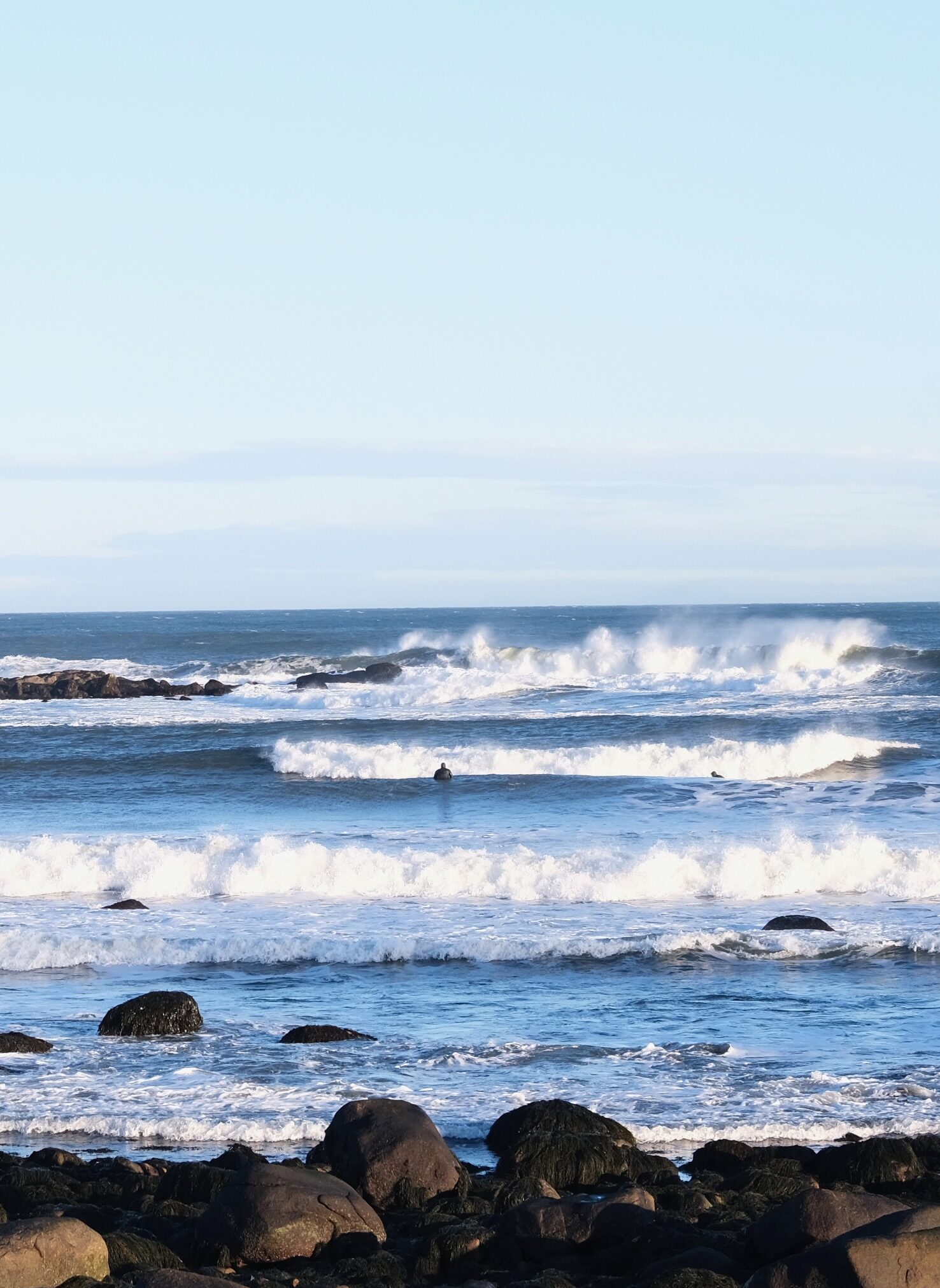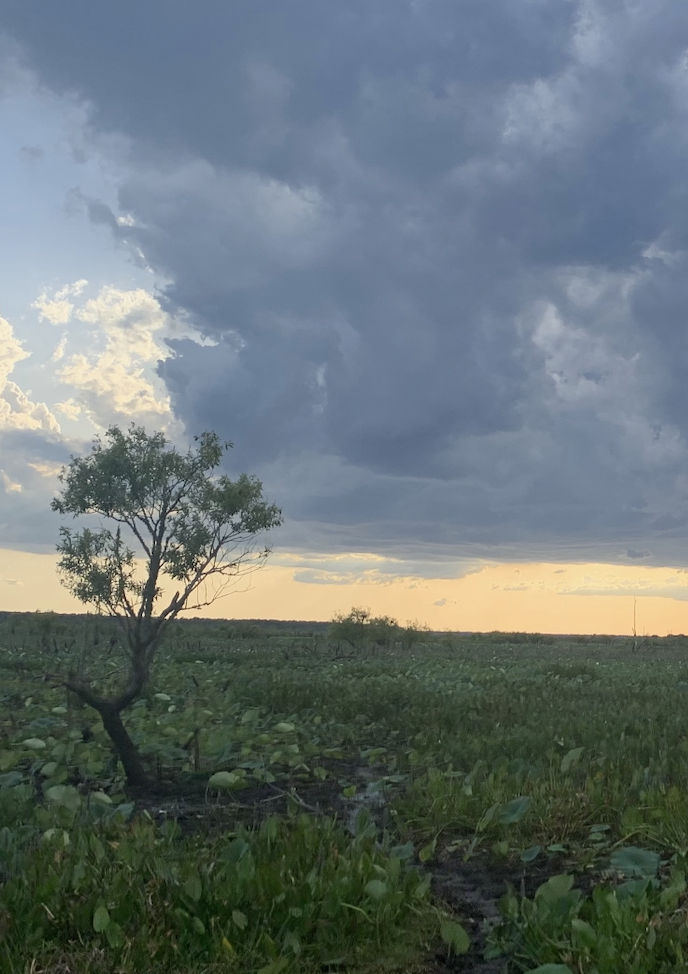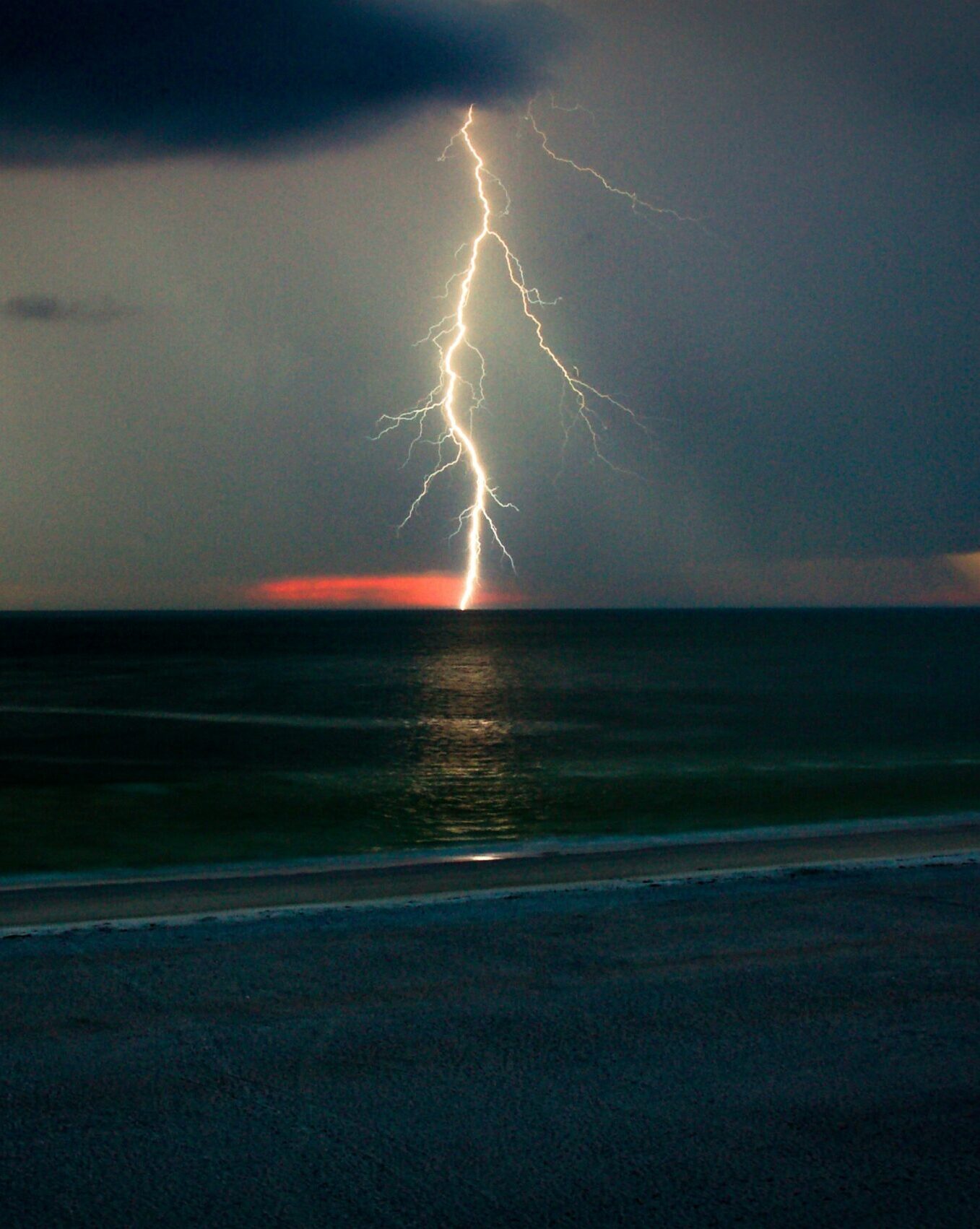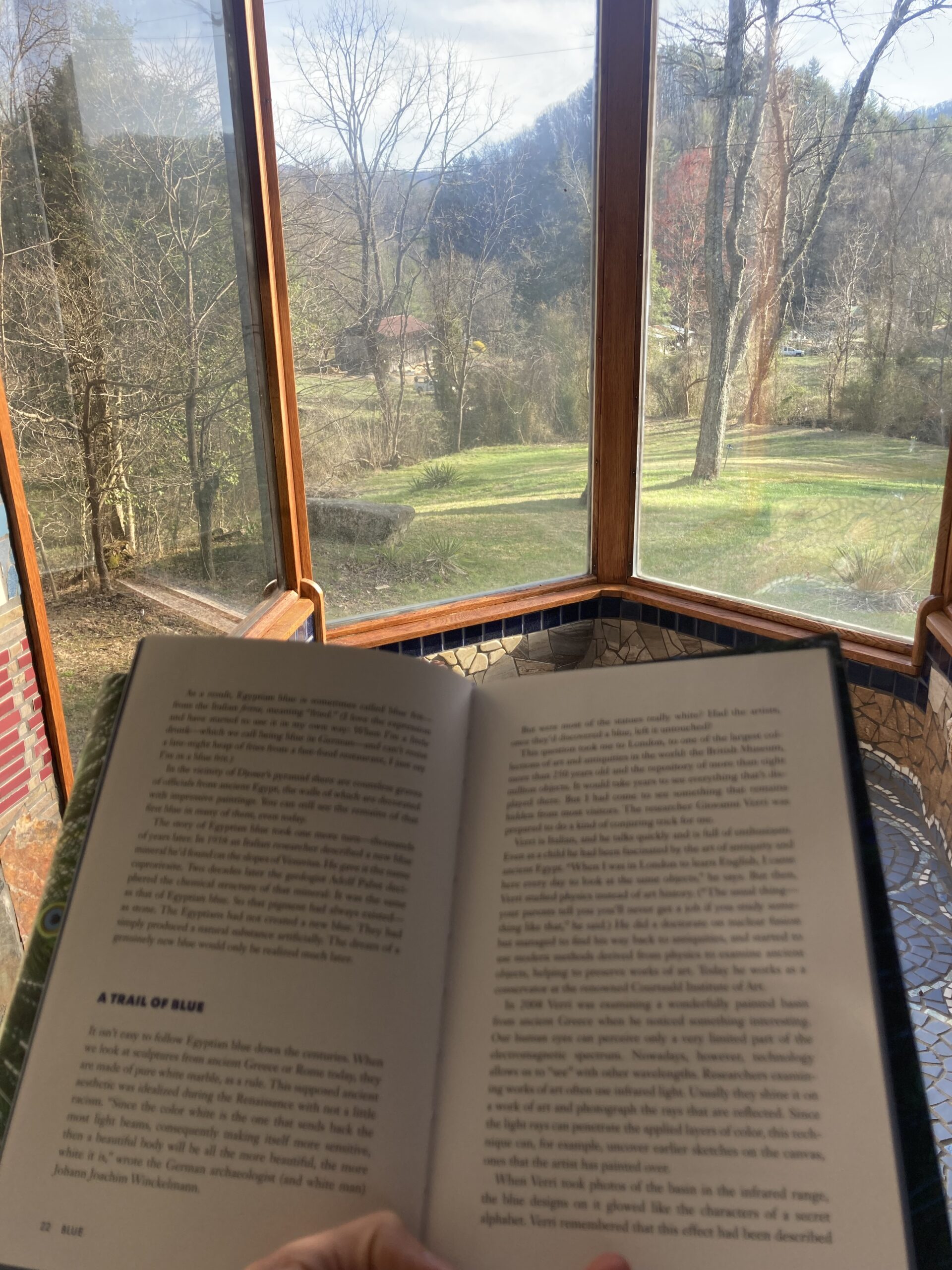By JOEANN HART
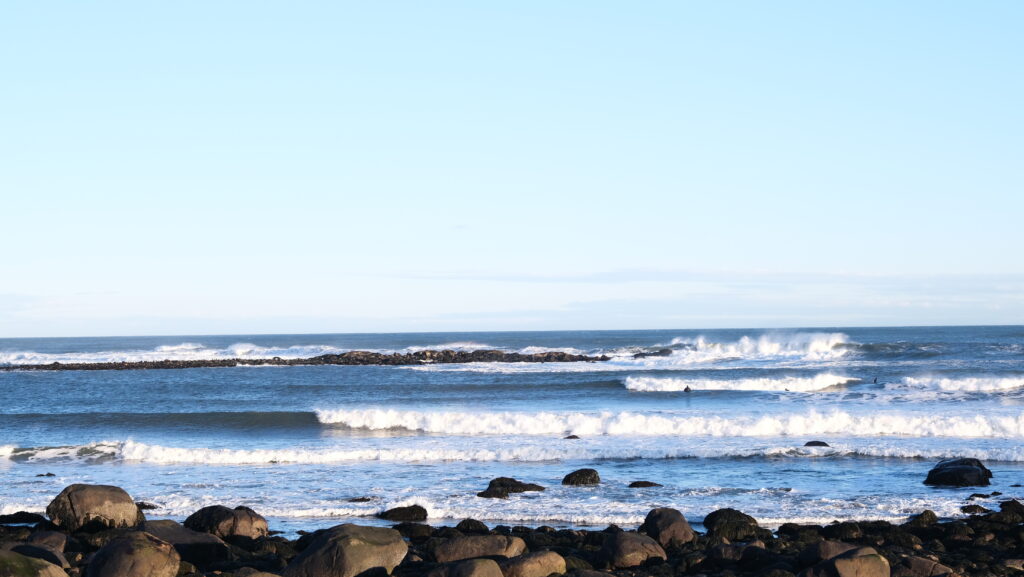
Photos courtesy of author.
Gloucester, Massachusetts
It was mid-winter, so I timed my afternoon walk to end before the early night. Heading to the beach, I crossed a sea-battered causeway that dropped off to the salty Atlantic on one side, and the fresh water of Niles Pond on the other, ending at Brace Cove. Formed by two boat-breaking arms of intertidal granite, waves were still crashing into the cove from a recent storm. Migratory seabirds struggled to fly in the crosswinds. Added to the elemental roar of water was the steady screech of stones grinding in the surf, too rough a day even for the resident seals. As I stepped down from the causeway and onto the beach, I saw a man with binoculars around his neck. He was talking on the phone and there was a large, motionless shape at his feet.
Atlantic white-sided dolphins live in temperate waters off the coast. These gregarious animals swim alongside Gloucester’s whale watch boats, leaping for joy. The dolphin’s eyes were still so alive, it was hard to believe she was dead. The high tide had left her body right below the wrack line. She was not entangled in fishing gear, and there was no obvious bruising from a boat strike. Having drifted too close to land during the storm, she must have gotten caught in the powerful churn of the incoming waves and drowned. The man put his phone away. He told me he had contacted the Seacoast Science Center who would send someone out, and then we both stood in silence. The sun hung low behind us. The dolphin’s body cast a long shadow on the sand, stretching towards the sea.
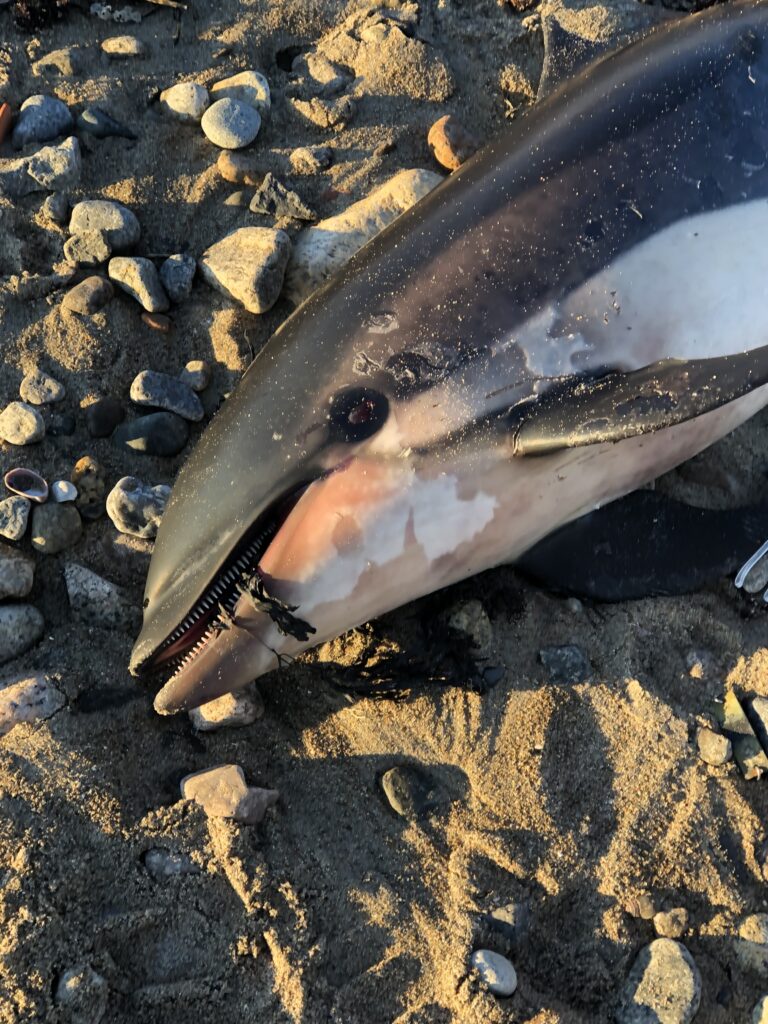
She was less than six feet from nose to tail, which is not full grown for a female. Being a mammal, she had a vulva for live birth, but was too young to have bred. The only marks on her body were shallow tooth scratches. Dolphin teeth. The tines were perfectly matched with her own, suggesting that members of her social group had tried, and failed, to save her. The marks were not curved like a bite, but straight, as if dolphins had pushed with the sides of their heads, their teeth lightly grazing her skin, trying to raise her up for air. They worked against the wild tumult of the ocean, with stones and marine debris crashing through the water around them. It was so loud. There was no light, only fear. Finally, due to echolocation, her family could see her heart stop beating, and then they had to let her go. She was swept towards an unknown shore and now laid at my feet. Grief crashed over me, even as I imagined the care that saw her to the end.
The next day, I found her farther along the beach, where the tide had pulled her out, then back in, leaving her a few dozen yards away. A stick was placed exactly parallel to her body, which meant some official was monitoring her movement. The date of her death was written in pink oily chalk on the black expanse of her skin. Her body was now her gravestone. She was still perfect except for this, but the next day there were signs of blood pooling in her carcass, staining her white streaks purple. A length of seaweed was caught in her mouth. Every day, for three days, she moved up the beach with the tides, the stick carefully replaced each time she came to rest. There was more pooled blood, but no signs of desecration. Coyotes and other scavengers left her alone.
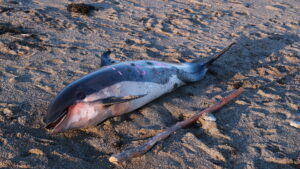
JoeAnn Hart is the author of Arroyo Circle, a novel of reclamation in a time of loss, to be published by Green Writers Press in October 2024. Her other work includes the fiction collection Highwire Act & Other Tales of Survival, the memoir Stamford ’76, and the novels Float and Addled. Her writing explores the relationship between humans, their environments, and the more-than-human world.
